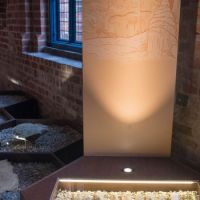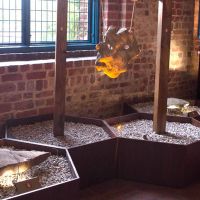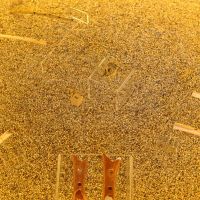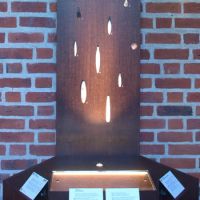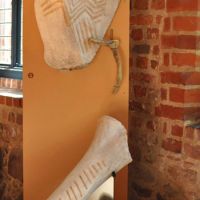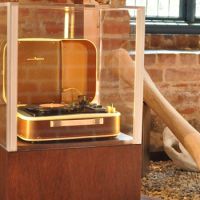
 The first room of the exhibition – Primordial Sounds of Humanity – shows what we know about music in the Stone Age. For the first time, ARCHÆOMUSICA provides an overview on music-making in the Palaeolithic, Mesolithic and Neolithic periods, covering a time span between roughly 40,000 and 2,500 BC. From the early periods of humanity, however, only finds made of durable materials like bone, shell, teeth or antler have survived. Such materials were used to craft a variety of instruments, such as flutes or clarinets from the wing bones of birds or mammoth tusks, rattles from shells or teeth, and scrapers from deer antler. In the Neolithic period, shell horns and pottery instruments, such as horns, drums, rattles, and flutes, were introduced.
The first room of the exhibition – Primordial Sounds of Humanity – shows what we know about music in the Stone Age. For the first time, ARCHÆOMUSICA provides an overview on music-making in the Palaeolithic, Mesolithic and Neolithic periods, covering a time span between roughly 40,000 and 2,500 BC. From the early periods of humanity, however, only finds made of durable materials like bone, shell, teeth or antler have survived. Such materials were used to craft a variety of instruments, such as flutes or clarinets from the wing bones of birds or mammoth tusks, rattles from shells or teeth, and scrapers from deer antler. In the Neolithic period, shell horns and pottery instruments, such as horns, drums, rattles, and flutes, were introduced.ARCHÆOMUSICA, Room 1 (Photo: Placido Scardina)



